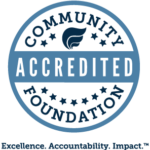Investing In Our Future By Combatting Summer Learning Loss
Aug 23, 2016
Originally published on the Hearst CT News Blog.
It’s a time-honored tradition. As August approaches, “back to school” advertisements signal the relaxed days of summer vacation are nearly over, and it’s time to refocus attention on learning.
But for a growing number of Fairfield County students and teachers, these last weeks of summer haven’t been spent on the beach. Instead, they’ve been spent in the classroom and beyond, continuing to build academic and leadership skills. It’s part of a larger movement in response to the rising tide of awareness regarding the vital importance of summer learning to keep kids on track for equal growth, achievement and opportunity.
Why Is Summer Learning Critical For Long-Term Success?
For nearly a decade, preventing summer learning loss has been a strong focus for Fairfield County’s Community Foundation. In 2008, program leaders and administrators became aware of alarming research on the “summer slide” and how it disproportionately impacts low-income students.
According to the National Summer Learning Association, when it comes to math the news isn’t great for students across the board. During the summer, most youth lose the equivalent of two months of math skills. But when it comes to reading, results begin to diverge. Middle-income students make slight gains in reading skills over the summer months as they explore new interests and places. By contrast, low-income students lose more than two months in reading achievement, as parents struggle to find and afford quality childcare and healthy food.
Over time, these gaps grow exponentially. By fifth grade, summer learning loss means low-income students are nearly three years behind their peers. And by high school, it accounts for about 2/3 of the difference in the likelihood of pursuing a college preparatory program. In fact, more than half of the achievement gap between lower- and higher-income youth can be explained by unequal access to summer learning opportunities.
Supporting Fairfield County’s Youth Through Summer Learning Programs
In 2008, Fairfield County’s Community Foundation began partnering with grantees to close this opportunity gap. The goal is to focus on summer learning as a critical component of academic success, and to help organizations to build their capacity to deliver high-quality programs.
Today, nearly one third of the Community Foundation’s Thrive by 25 grant portfolio is focused on summer learning. Fueled by local philanthropists, the Thrive by 25 initiative aims to provide Fairfield County youth with the tools they need to become self-sufficient by their mid-twenties. Grants awarded through this program are informed by research showing that students’ odds of long-term success are increased when they are supported through academic transitions, and provided with clear pathways to meaningful careers.
Grantee offerings like the Start2Finish Summer Bridge Intensive Math Program at Norwalk Community College (NCC) are meeting this need. This free four-week program brings high school students onto campus to get a “head start” on their college experience: leading them through coursework to become eligible for college math, teaching them about career and academic options at NCC, and building relationships with peers and college faculty that provide a foundation of support for new college freshmen.
“This program gave me a jump start before the fall semester so I could be more comfortable and adapted to the environment,” says Toni-Gaye, a Start2Finish Summer Bridge participant. “I am close with everybody I met, and talk with them whenever I see them. The most important part: it helped me pass Math 94.”
Other offerings, like the City of Stamford’s Mayor’s Youth Employment Program, provide hands-on job experience to help build students’ confidence and resumés. This year, the Stamford program placed more high school students than ever – 91 in total – in paid summer internships. For the city, it’s a win-win: they’re supporting municipal projects and staying under budget, while providing the next generation of staffers and citizens with a “leg up” on launching a career through a first job experience that offers valuable connections and skill building.
Of course, truly closing the opportunity gap means starting at the very beginning of a child’s education. That’s the underlying concept at Horizons, an award-winning, tuition-free summer enrichment program that serves low-income public school students. This Community Foundation grantee program serves students from pre-K through high school, with locations at New Canaan Country School, Norwalk Community College and Sacred Heart University. The program has been immensely successful, with a high school graduation rate of 99% to date.
For young people who have access to summer learning programs, the long-term benefits are clear. And for educators, the rewards may be just as great. Taylor Hemphill, a co-site director for Let’s Get Ready, says that it’s deeply fulfilling to support students as they grow into confident, accomplished young people.
“We had one student who had such anxiety on day one, but who now goes up to the board and asks great questions,” says Hemphill, whose organization helps low-income Norwalk High School students prepare for SATs and the college admission process.“I’m happy to have helped her open up.”
[soliloquy id=”3445″]
As a trusted nonprofit partner and thought leader, Fairfield County’s Community Foundation brings together community organizers, business experts and philanthropists to solve our region’s challenges. Our goal is to create a vital and inclusive community, where every individual has the opportunity to thrive. Learn how you can support our Thrive by 25 initiative and find other ways to give back in your community.
Together we thrive.

